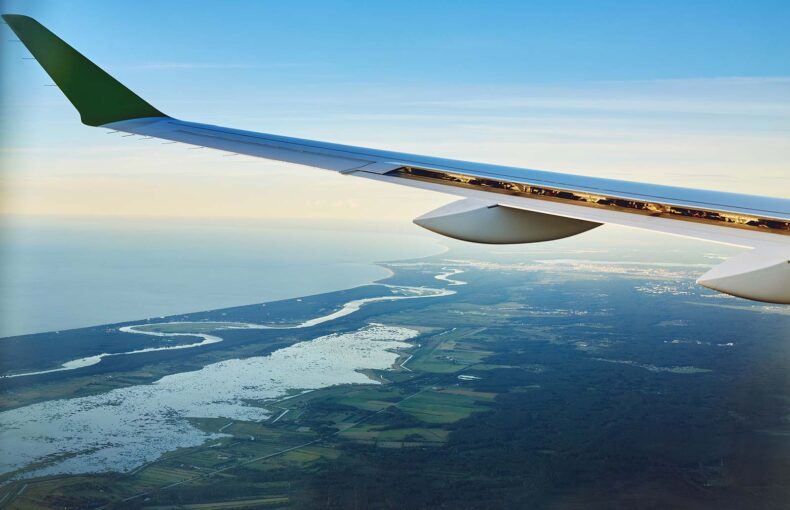A snapshot of aviation in 2023: Routes, flight density, and aircraft dynamics
In 2023, the aviation sector experienced a significant resurgence in flight operations, marked by a substantial rise in flight volume over previous years.
This revival in air traffic was driven by the relaxation of travel restrictions and a surge in consumer demand for travel, prompting airlines to swiftly expand their offerings to meet this increase.
As we delve into the essential metrics, it becomes apparent that the core of air travel resided in the intricate network of connections between neighbouring regions. Through a thorough analysis of passenger and cargo flight data, route preferences, and aircraft utilization, this review not only offers insights into the past but also serves as a strategic guide for the industry’s future. It equips stakeholders to navigate uncertainties, tackle emerging challenges, and promote sustainable growth in the ever-evolving aviation landscape.
Unravelling flight density and strategic routes in 2023
Examining flight density reveals that passenger flights significantly outnumbered cargo flights, nearly doubling their presence. Within regional operations, America took the lead in cargo flights (704k flights), followed by Asia (282k flights) and Europe (210k flights), while Asia claimed the top spot for intercontinental air cargo (98k flights).
In terms of passenger travel, America emerged as the busiest region (11,3 million flights), closely trailed by Asia (10,5 million flights), with Europe securing the third position with half as many flights. Regarding intercontinental travel, Asia and Europe stood out as among the most popular destinations.
Cargo flights
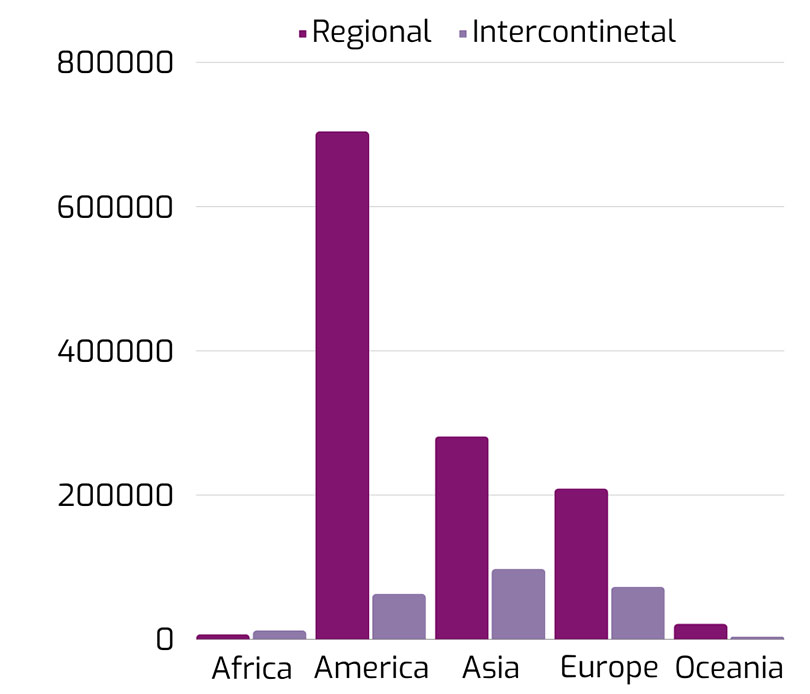
Passenger flights
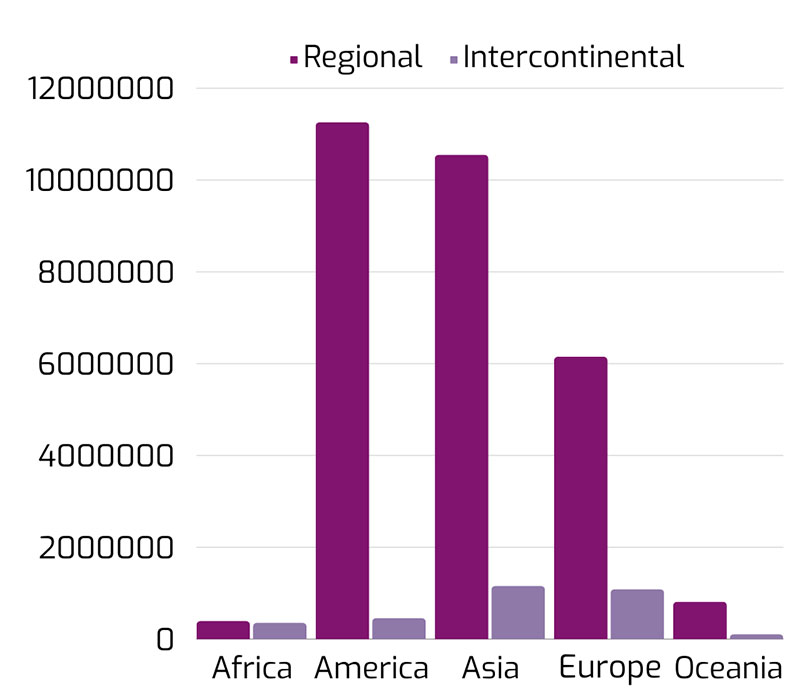
Let’s look into which regional and intercontinental routes experienced the highest service frequency:
| Cargo Flights | Passenger Flights | |
|---|---|---|
| Regional | Kahului – Honolulu | Seoul – Jeju |
| Los Angeles – Memphis | Melbourne – Sydney | |
| Miami – Kentucky | Ho Chi Minh airports | |
| Honolulu – Kalaoa | Tokyo – Hokkaido | |
| Shenzhen – Hangzhou | Riyad – Jeddah | |
| Intercontinental | Hong Kong – Anchorage | Kuala Lampur – Singapore |
| Bogota – Miami | Jeddah – Cairo | |
| Seoul – Anchorage | Singapore – Jakarta | |
| Quito – Miami | Incheon – Osaka | |
| Anchorage – New York | Incheon – Tokyo |
Top 5 aircraft dominating cargo and passenger travel in 2023
When it comes to aircraft analysis, Boeing emerged as the leader in cargo transportation, while Airbus took center stage in the realm of passenger travel. The B767-300F performed 315k cargo flights, followed by B777-200F with 179k cargo flights. Although Airbus dominates the Top 5, the number one spot based on the number of operated flights goes to B737-800 with over 6,4m flights. The leading Airbus aircraft following is A320-200 with half of the flights ~ 3,7 million.
This division of dominance underscores the industry’s response to the dual demands of efficiently moving goods and providing comfortable, fuel-efficient options for an ever-growing number of passengers.
Top 5 aircraft types by the number of flights they operated
Cargo aircraft type

Passenger aircraft type

When analysing which aircraft type dominated the skies based on the number of kilometres it flew, the pictures changes. In the cargo sector, Boeing 777-200F led the way with over 961m kilometres, followed by B767-300F (612m kilometres) and B747-400 with 525m kilometres.
On the other side, despite the Airbus dominance among passenger aircraft with the highest number of flown kilometres, the first spot still goes to Boeing 737-800 with over 8bn kilometres. The remaining 4 spots are taken by Airbus A320 family aircraft with roughly half the distance flown.
Top 5 based on kilometers flown:
Cargo aircraft type
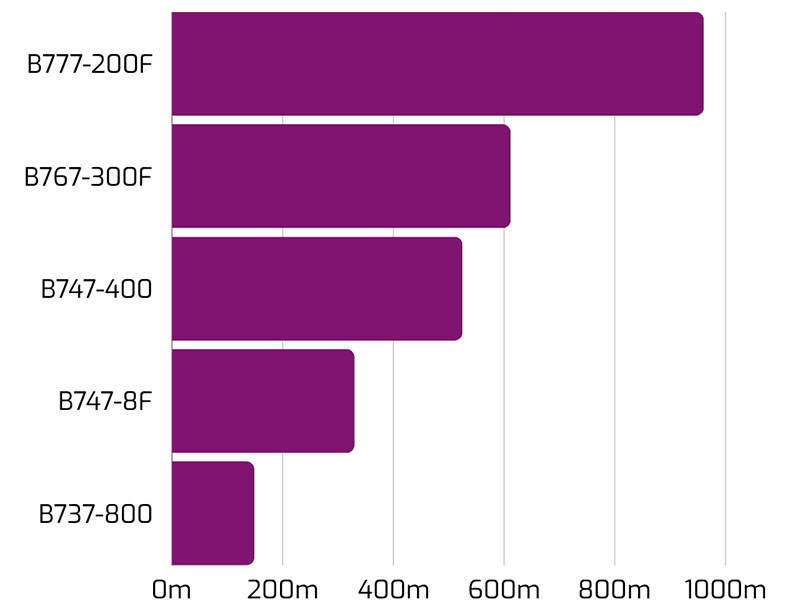
Passenger aircraft type
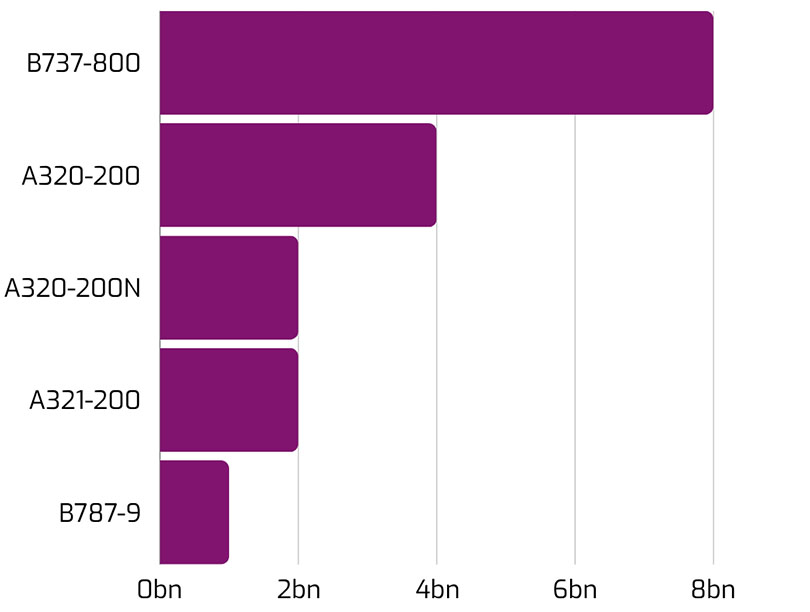
Concluding insights on aviation’s dynamic journey in 2023
Leveraging space-based aviation insights has proven to be a transformative catalyst in enhancing decision-making processes within the industry. The utilization of satellite data and flight data analytics enables stakeholders to attain a comprehensive and real-time understanding of global aviation dynamics.
This wealth of information fosters a heightened level of transparency, allowing for a more accurate assessment of air traffic patterns, distribution of travel trends between regional and intercontinental flights, maintenance requirements for different aircraft types and fleet utilisation between Airbus and Boeing jets. The access to rich aviation data facilitates faster response times to unforeseen events, enabling airlines, regulators, and other industry players to adapt swiftly and efficiently. Moreover, space-based insights contribute to efficient time management by optimizing route planning, fuel consumption, and overall operational efficiency, ultimately ushering in a new era of precision and effectiveness in the aviation sector.
Unlock sustainable skies: Insights for greener aviation
Leveraging satellite technology allows for real-time monitoring of aircraft movements, optimizing flight routes, and minimizing fuel consumption. Through the utilization of comprehensive space-based data solutions, you can adeptly tackle the issues surrounding carbon emissions and pinpoint avenues for reducing the carbon footprint.
Our commitment extends to advancing contrail research and modelling, enriching the shared knowledge of their climate effects. We empower our customers with strategic contrail management solutions, enabling them to effectively mitigate contrail impacts and embrace sustainable practices within the aviation industry.
 Written by
Written by